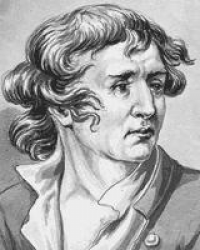
 |
|
|
||
|
Thomas Knowlton |
||||
|
Engagements: • Revolutionary War (1775 - 1783) |
||||
| Biography: | ||||
|
Thomas Knowlton Thomas Knowlton was born into a military family on 22 November 1740 in West Boxford, MA. When he was eight, his family relocated to a farm in Ashford, CT, (current property of the June Norcross Webster Scout Reservation). In 1755, at age fifteen, Knowlton served in the French and Indian War with his older brother Daniel. He enlisted in Captain John Durkee's company, and is known to have joined Daniel on scouting missions into enemy territory. He later served in Captain John Slapp's 8th Company, where he served with Throope Chapman. He served during six campaigns in the war and was promoted to Lieutenant in 1760. He also fought in Israel Putnam's Company against the Spanish during the British expedition against Cuba in 1762. By August 1762, Knowlton had returned home and married Anna Keyes. He and his wife raised nine children. At the age of thirty-three, Knowlton was appointed a Selectman of Ashford, CT. Battle of Bunker Hill On 18 April 1775, General Thomas Gage dispatched a contingent of British troops to Lexington and Concord, about fifteen miles from Boston, MA. This action led to the outbreak of hostilities that became the American Revolution. On learning of the Battles of Lexington and Concord, the Militias of Massachusetts and Connecticut communities mobilized their members. Thomas Knowlton joined his Militia, the Ashford Company, which became part of the 5th Connecticut Regiment, along with the men from Windham, Mansfield and Coventry, CT. Knowlton was chosen unanimously as Captain and led 200 men into Massachusetts. His force consisted of farmers, without uniforms, primarily armed with shotguns. Knowlton was ordered to Charlestown to join Colonel William Prescott. Knowlton's troops were sent by Colonel Prescott to oppose the advancing British Grenadiers, and took their posts on the side of Breed's hill. Using a rail fence as a base, the men threw up a parallel fence and, filling the space between with new-mown grass, formed an effective breastwork. There they held their ground until the general retreat, and were among those providing cover as the troops retreated. Only three men from Knowlton's company died in the battle. Years later, Colonel Aaron Burr said: "I had a full account of the Battle from Knowlton's own lips, and I believe if the chief command had been entrusted to him, the issue would have proved more fortunate. It was impossible to promote such a man too rapidly." In June 1775, for his bravery at Bunker Hill, Knowlton was promoted by Congress to Major. One of his men later remembered that Knowlton was courageous to a fault, never crying, Go on, boys! but always, Come on, boys!. On 8 January 1776, he led a troop in a successful incursion into Charlestown to burn housing used by British officers. Knowlton's Rangers On 12 August 1776, General of the Army George Washington promoted Knowlton to Lieutenant Colonel. He was ordered to select an elite group of men from Connecticut, Rhode Island, and Massachusetts to carry out reconnaissance missions. America's first official spies, "Knowlton's Rangers" were also the first organized American elite troops, analogous to a modern special forces unit. The famous American spy, Captain Nathan Hale, was under the command of Lieutenant Colonel Thomas Knowlton. The date "1776" on the modern U.S. Army's Intelligence Service Seal refers to the formation of Knowlton's Rangers. On 16 September 1776, Knowlton's Rangers, outfitted as a regiment of light infantry, were scouting in advance of Washington's Army at the Battle of Harlem Heights. They stumbled upon the Black Watch, an elite Highlander British unit with an attachment of Hessians. They managed a successful retreat but re-engaged the enemy with the support of a unit led by Major Andrew Leitch of Virginia. General Washington ordered the units to fall on the enemy's rear, while a feint in front engaged the British troops' attention. An American premature shot into the right flank of the British ruined Washington's element of surprise and placed Knowlton's Rangers and the Virginians at risk. Once the premature shot had been fired, Knowlton rallied his troops to carry on the attack. Both commanding officers were killed in front of their men. Knowlton's loss was lamented by Washington in his general orders for 17 September 1776 with the statement "The gallant and brave Col Knowlton, ... would have been an Honor to any Country, having fallen yesterday, while gloriously fighting ...". The Battle of Harlem Heights took place in what is now the Morningside Heights and west Harlem neighborhoods of Manhattan. The Knowlton Award In 1995, the Military Intelligence Corps Association established the Knowlton Award, presented to individuals who have contributed significantly to the promotion of Army Intelligence. Death and Burial Lieutenant Colonel Thomas Knowlton died in battle on 16 September 1776 in Harlem, NY. According to the Connecticut Society of Sons of the American Revolution, Thomas Knowlton was buried with military honors in an unmarked grave at what is today the intersection of 143rd St. and St. Nicholas Ave. in New York City. A headstone for Knowlton is located at Westford Hill Cemetery in Ashford, CT. |
||||
| Honoree ID: 2718 | Created by: MHOH | |||
Ribbons
Medals
Badges
Honoree Photos
 |  |  |
 |  |
 |


